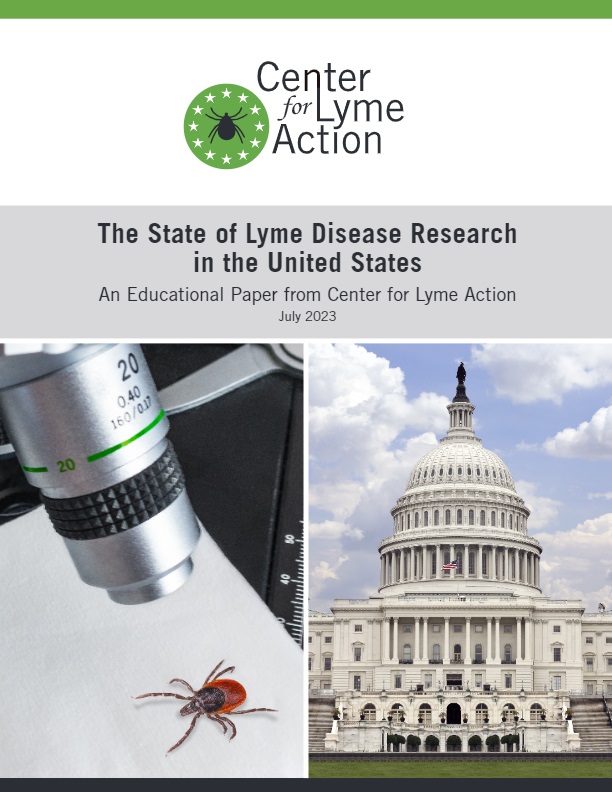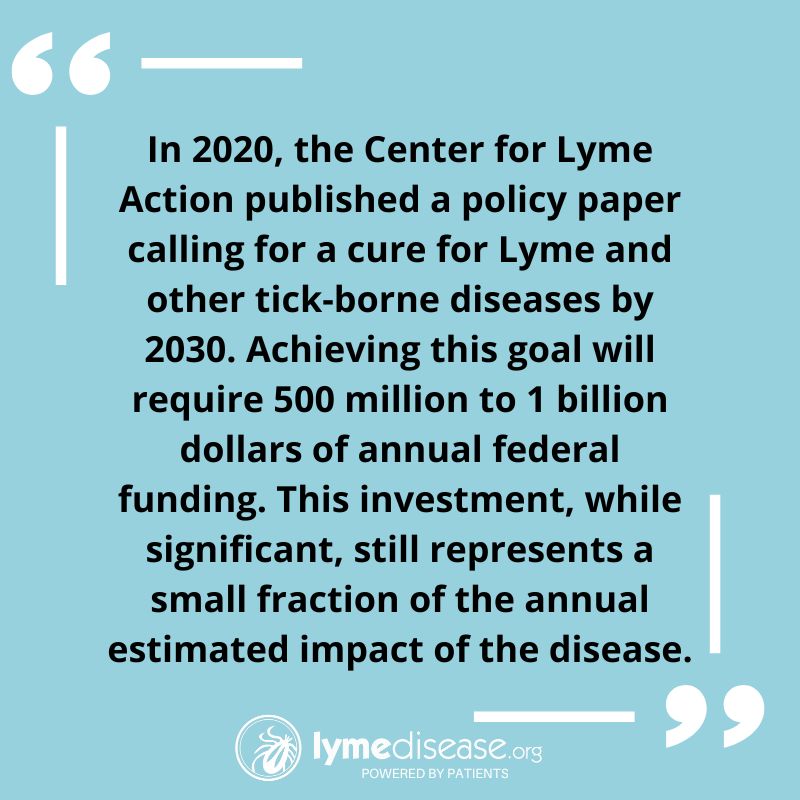Report calls for Lyme funding of up to a billion dollars per year

The Center for Lyme Action has published a 73-page document called “The State of Lyme Disease Research in the United States.” What follows is an overview of report’s main points.
Executive Summary
A growing epidemic
Tick-borne illness is a growing health threat to the American public, and ticks capable of transmitting diseases are found in all fifty states. Lyme disease accounts for the vast majority of tick-borne illnesses in the Northern Hemisphere, with an estimated 476,000 Americans diagnosed and treated annually.
Caused by an elusive pathogen
Decades of research on the causative agent of Lyme disease, a bacterium called Borrelia burgdorferi, demonstrates that it is an elusive pathogen capable of evading the immune system. The infection starts locally around the spot of the tick bite, but later disseminates to tissues throughout the body, including the skin, joints, heart, peripheral nervous system, and brain.
With no reliable diagnostic
Patients acquiring Lyme disease have a high probability of misdiagnosis. Lyme disease often comes with an erythema migrans rash, which is the most common method of diagnosis. However, the complexities of rash presentation make this approach unreliable, with a misdiagnosis potential of over 50%. In vitro diagnostic tests are also unreliable with the standard of care incorrectly reporting 39-59% of early Lyme cases.
And ineffective treatment
Treatment is most effective in the early stages of the infection; however, treatment failure still occurs in 14% of patients receiving timely therapy. Patients with delayed treatment have over 2 times the odds of failing treatment and developing chronic, debilitating symptoms. This condition impacts over 2 million Americans.
Resulting in societal burden
The annual direct medical costs associated with Lyme disease are estimated at $914 million – $1.7 billion, with the full economic impact potentially reaching $50 -$100 billion. Borrelia is also linked to other costly conditions such as neuropsychiatric disorders, dementia, and heart conditions that increase the economic impact.
HHS and NIH request more research
In 2016, the Department of Health and Human Services (HHS) assembled a Tick-Borne Disease Working Group. This group called for the National Institutes of Health (NIH) to develop a plan to address this critical public health problem. In 2019, NIH released a comprehensive and well-researched Strategic Plan to improve tick-borne disease diagnosis, prevention, and treatment.
Yet funding is insufficient
Despite this government support, Lyme research received only $50 million in NIH funding in 2022. This amount represents less than 2% of the public funds invested in HIV/AIDS, though the annual case count for Lyme is over an order of magnitude higher. The per-case funding for Lyme is also dwarfed by other vector-borne diseases, receiving 0.1% and 0.5% of that for malaria and West Nile virus, respectively.
A call to action
In 2020, the Center for Lyme Action published a policy paper calling for a cure for Lyme and other tick-borne diseases by 2030. Achieving this goal will require research funding of $500M – $1B per year. This document summarizes the research to date in Lyme disease to show that this call to action is justified and essential.
© Center for Lyme Action
The full report can be accessed here.





















We invite you to comment on our Facebook page.
Visit LymeDisease.org Facebook Page